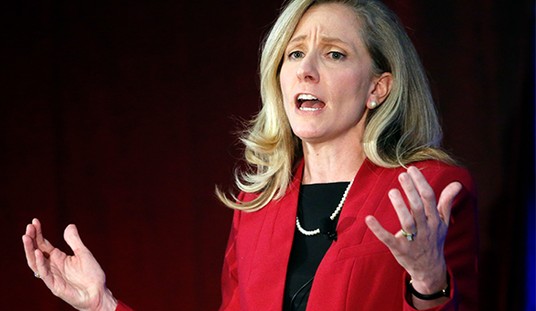The recent spate of pro-life bills in state legislatures owes itself to two specific developments. First, Republicans have won or kept large legislative majorities in conjunction with gubernatorial control. And more important, the Supreme Court’s composition at the moment gives hope that the court may be ready to overturn Roe, or more accurately Casey.
But are those hopes realistic? A Supreme Court ruling today suggests that the willingness of the most conservative court in decades to rethink the abortion debate has been somewhat overstated:
The Supreme Court on Monday said it has allowed part of an Indiana abortion law to take effect, requiring fetal remains be buried or cremated after an abortion.
But the court has also let stand a lower court ruling that invalidates Indiana’s ban on abortion solely on the basis of sex, race or disability.
The court wrote that it didn’t rule on the “merits” of the latter claim, NBC notes, but that might not mean much:
The court’s brief order Monday said it “expresses no view on the merits” of that issue. But because only one federal appeals court has ruled on the question, “we follow our ordinary practice of denying petitions insofar as they raise legal issues that have not been considered by additional Courts of Appeals.”
But the Supreme Court allowed the state to enforce another provision of the law that requires fetal remains to be disposed of by burial or cremation rather than as medical waste. A total of 18 states had urged the Supreme Court to hear Indiana’s appeal.
One has to figure that four justices who are looking for a way to challenge Roe or Casey wouldn’t have waited for two appellate courts to ignore stare decisis before leaping at the chance. In this case, not one justice voted to review the issue of sex-selective abortions, as ABC reported at the first link:
The court also unanimously declined to review a 7th Circuit Court of Appeals ruling that Indiana’s ban on “selective” abortions imposed an “undue burden” on women. That part of the state law remains invalid.
If this court was as ready to reassess abortion on the basis of full personhood arguments, this case might have been better suited than Alabama’s ban of all abortions in any circumstances. The conservative justices could have highlighted the disposable nature of sex-selective abortions as particularly egregious. Instead, not a single justice voted to seize on that issue as leverage to get to either Roe or Casey:
Our opinion likewise expresses no view on the merits of the second question presented, i.e., whether Indiana may prohibit the knowing provision of sex-, race-, and disability-selective abortions by abortion providers. Only the Seventh Circuit has thus far addressed this kind of law. We follow our ordinary practice of denying petitions insofar as they raise legal issues that have not been considered by additional Courts of Appeals. See this Court’s Rule 10.
Ahem. If four justices wanted to address this, it would have gotten cert regardless of scrupulosity about Rule 10. The rule itself states that it is “neither controlling nor fully measuring the Court’s discretion,” meaning that it’s a guideline rather than a “rule.” The Supreme Court can take a case directly from a district court if it sees fit to do so. They just aren’t inclined to address the fundamental questions abortion raises, and apparently aren’t terribly inclined to admit it either.
Even Clarence Thomas declined to take up those issues that the Indiana law confronted. In his lengthy concurrence, Thomas wrote extensively about eugenics and its ties to Planned Parenthood and abortion in general, a well-written and explosive discourse that will be rightly hailed as a moment of clarity. Unfortunately, the explosive discourse ends in a dud:
Given the potential for abortion to become a tool of eugenic manipulation, the Court will soon need to confront the constitutionality of laws like Indiana’s. But because further percolation may assist our review of this issue of first impression, I join the Court in declining to take up the issue now. …
The Court’s decision to allow further percolation should not be interpreted as agreement with the decisions below. Enshrining a constitutional right to an abortion based solely on the race, sex, or disability of an unborn child, as Planned Parenthood advocates, would constitutionalize the views of the 20th-century eugenics movement. In other contexts, the Court has been zealous in vindicating the rights of people even potentially subjected to race, sex, and disability discrimination. Cf. Pena-Rodriguez v. Colorado, 580 U. S. ___, ___ (2017) (slip op., at 15) (condemning “discrimination on the basis of race” as “‘odious in all aspects’”); United States v. Virginia, 518 U. S. 515, 532 (1996) (denouncing any “law or official policy [that] denies to women, simply because they are women, . . . equal opportunity to aspire, achieve, participate in and contribute to society based on their individual talents and capacities”); Tennessee v. Lane, 541 U. S. 509, 522 (2004) (condemning “irrational disability discrimination”).
Although the Court declines to wade into these issues today, we cannot avoid them forever. Having created the constitutional right to an abortion, this Court is dutybound to address its scope. In that regard, it is easy to understand why the District Court and the Seventh Circuit looked to Casey to resolve a question it did not address. Where else could they turn? The Constitution itself is silent on abortion.
With these observations, I join the opinion of the Court.
At best, this is a signal to lower courts for dissenting rulings that will provoke a Supreme Court review. Even if it is, the decision itself would counter much of that encouragement. The lack of enthusiasm for taking it up now doesn’t bode well for an eventual challenge on the issue of sex-selective abortions, let alone abortions in general.
It’s not as if the court wasn’t up for parsing out other particulars in the Indiana law. They upheld a clause that might put an end to fetal tissue harvesting in Indiana, a decision which has surprisingly broad support:
The justices concluded 7-2 that the state of Indiana has a “legitimate interest in the proper disposal of fetal remains” and that a requirement to bury or cremate an aborted fetus does not impose an “undue burden” on access to abortion.
Justices Ruth Bader Ginsburg and Sonia Sotomayor both would have let stand a lower court ruling blocking the provision. In a dissent, Ginsburg argues that disposition of fetal remains “implicates” the right of a woman to access an abortion “without undue interference from the state.”
Score that as a victory for David Daleiden and Sandra Merritt, whose undercover videos raised the issue of fetal tissue sales and prompted the law. Note, however, that this victory comes specifically because the issue does not “impose[] an undue burden on a woman’s right to obtain an abortion,” as the opinion repeatedly states.
This isn’t even a punt. It’s a pass, plain and simple. Maybe the court can’t avoid these issues forever, but this particular court certainly is in no hurry to take them up at all. And that bodes very ill for the flurry of pro-life legislation emerging from conservative states.








Join the conversation as a VIP Member